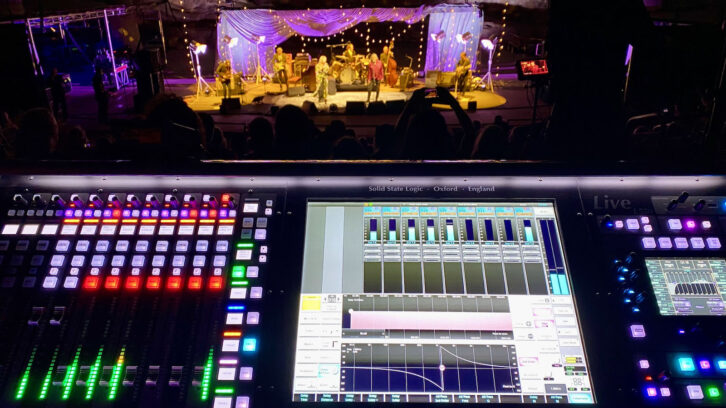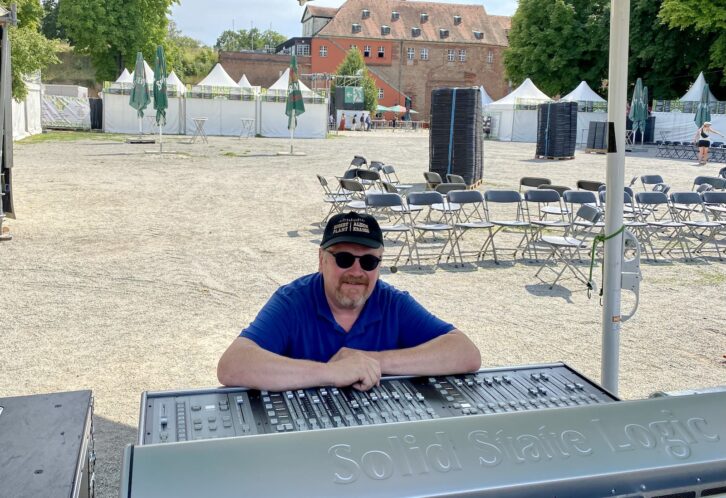
Nashville, TN (January 20, 2023)—Robert Plant and Alison Krauss’ first collaboration, 2007’s Raising Sand album couldn’t be termed anything less than an across-the-board smash. A critical and commercial success, the T Bone Burnett-produced record took home five Grammys in 2008, including Album of the Year, and spawned a sold-out tour. So when the artists paired up again 14 years later for 2021’s Raise the Roof, more success awaited—and another massive tour. To ensure that audiences got the intended impact of both the new songs and older favorites, Plant’s front-of-house engineer, Mark Kennedy, spec’d a Solid State Logic Live L550 console for the journey.
DCR Nashville provided the control package for the two U.S. legs of the Raise the Roof Tour, while Clair Global’s Britannia Row Productions supplied a Live L550 console and control gear for UK and European legs. When Kennedy started working with Plant in 2018, an L550 was already in the touring package, having been specified by his predecessor at FOH. “It’s extremely transparent and clear, but not in a brittle or a harsh way,” he explained, “and the bottom end is really good.”
SSL Ultraviolet Stereo EQ – A Real-World Review
Kennedy likes to keep things simple with the band, which features five musicians in addition to Plant and Krauss, for a total of 56 inputs. “I don’t like to overcomplicate things with too many effects or too many compressors,” he says. His go-to processing is on the SSL Live console’s channel strip. “I find that the onboard compressor on the channel strip is more than adequate. Then I use selected effects, on the double bass or the vocals or what have you. Effects-wise, it’s pretty simple: just instrument reverb and vocal reverb. I’ve found that the new reverbs on the console are really great. They sound fantastic, especially on the vocals. I only have one external effect—an old TC Electronic D2 echo—which we use on Robert’s voice for the big sustained vocal thing that he does.”

As for the EQ on the SSL Live console, he says, “It’s flexible and precise. I find myself using quite narrow Qs and being very surgical. But sometimes you just want a big push in the midrange to bring out the guitar, so you can use it quite wide, and it will give you that lift.”
Exclusive: Inside T Bone Burnett’s High-Tech Reinvention of the Record
Kennedy uses the console’s all-pass filter a lot, he says. “That’s a go-to, especially for acoustic instruments.” For example, for multi-instrumentalist Stuart Duncan, he says, “I have a microphone for his resonator instruments, like banjo. Sometimes he comes in close to the mic, and I can jump on the all-pass filter and bring up the tone. You don’t have to look at the board. When it sounds right, it is right. You can get tied up in looking at graphics. Just turn the knob and see what happens.”







